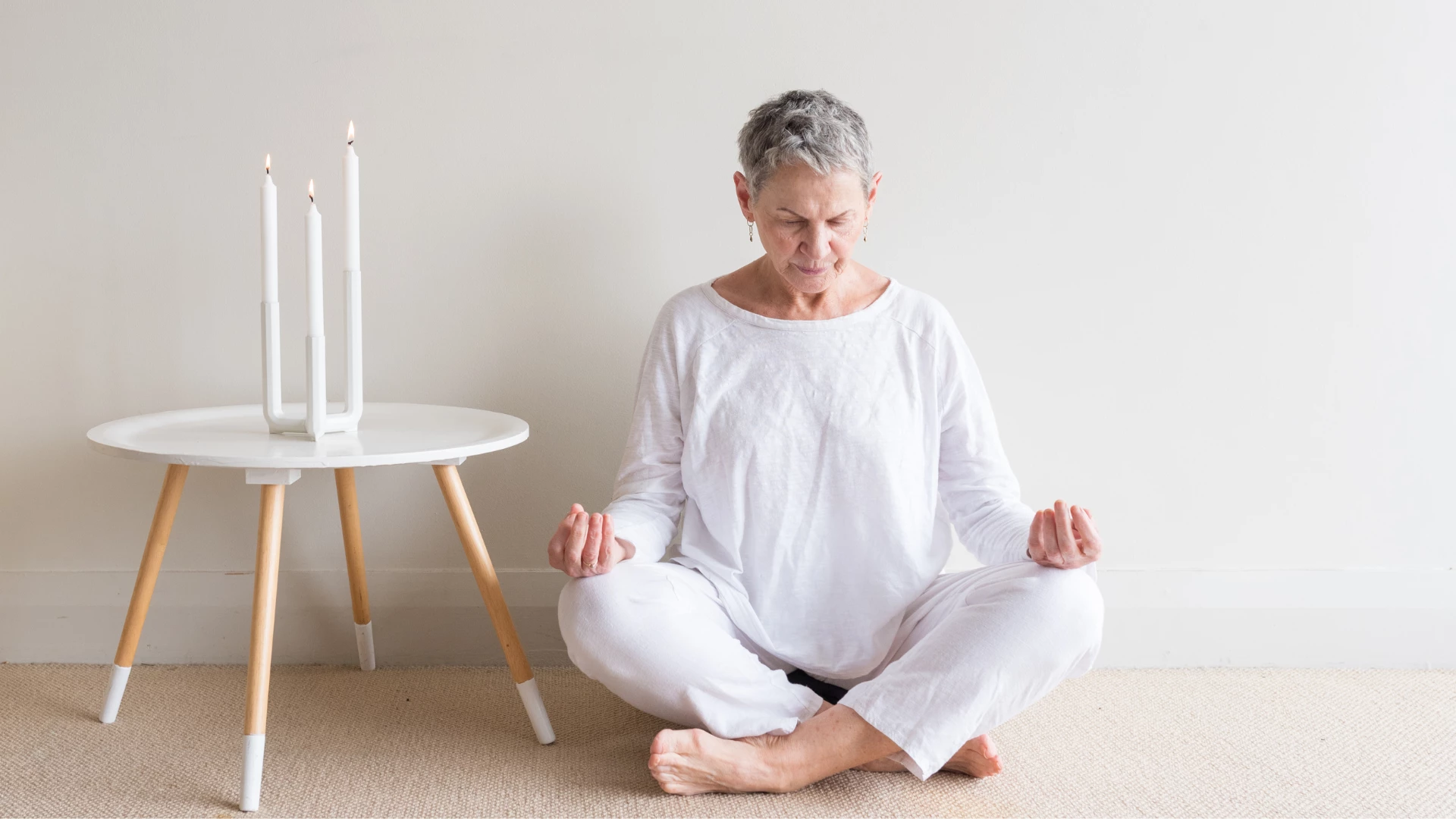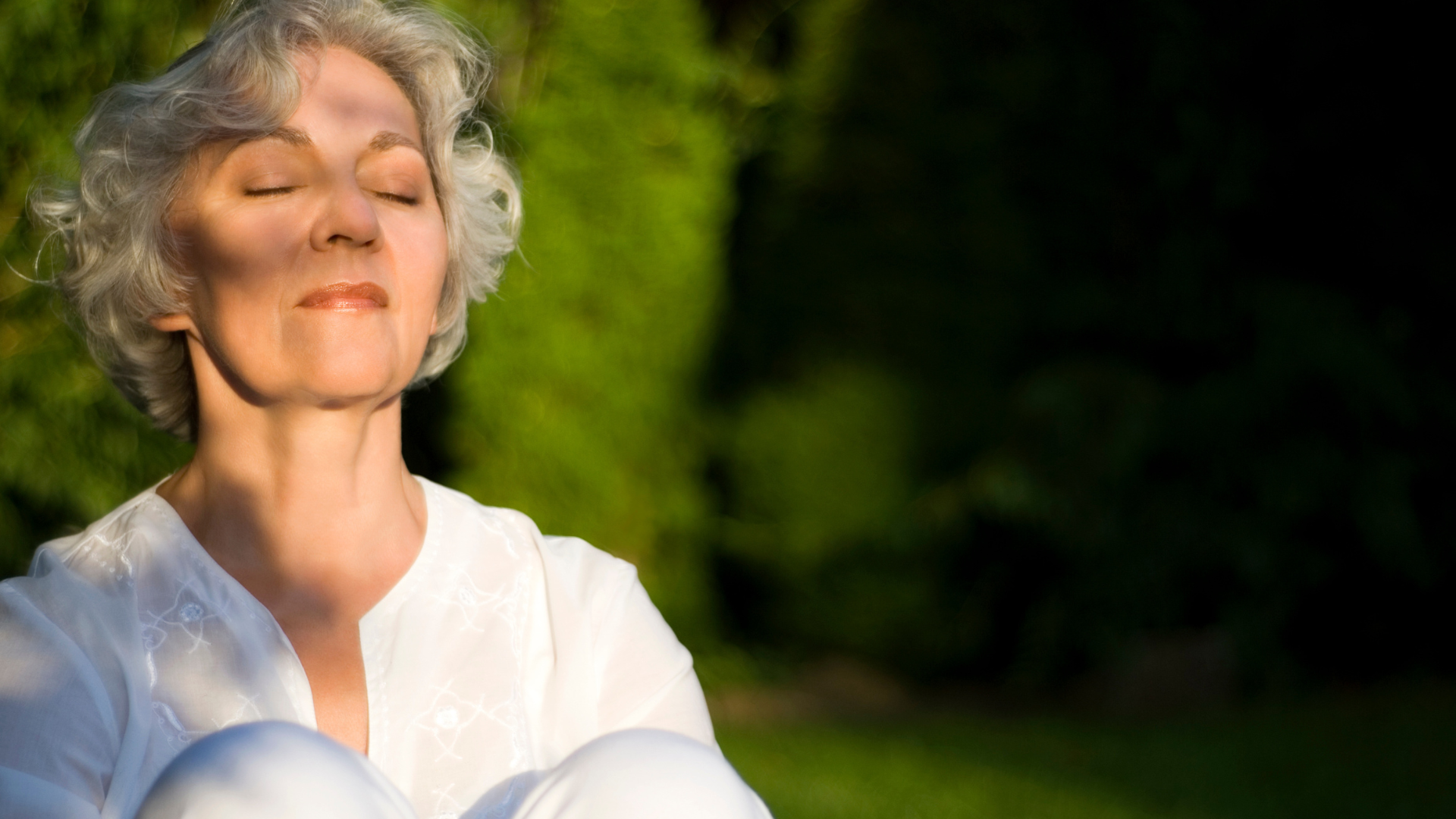Breast Cancer Stress-5 Ways Yoga Can Help Heal

Article At A Glance
As a breast cancer patient, you quickly discover that each person’s experience is unique. Depending on the diagnosis, stage of cancer development, age, family health history, and personal values, treatments vary widely. Even individuals with the same diagnosis may undergo very different surgical procedures and follow-up treatment.
The same is true of how each individual reacts to being diagnosed. Fear, anxiety, and depression are common, but many women react with strength and determination. Admittedly, I fell into the first group.
(This post is the second in a series about my breast cancer journey. If you missed Part 1, you can read it here.)
Treatments and Side Effects
After the initial biopsy and some additional testing, my doctor recommended a lumpectomy followed by several months of radiation treatment. I was lucky. For women with more aggressive or advanced breast cancer, a combination of radiation, chemotherapy, and hormone therapy are necessary. Unfortunately, many women experience long-term side effects from these treatments, including fatigue, headaches, pain, numbness, bone loss, memory loss, and heart problems. This takes an emotional toll, often resulting in stress, depression, anxiety, fatigue, and poor sleep. Thankfully, yoga can help with many of these side effects.
5 Benefits of Yoga for Breast Cancer
Research studies of women with breast cancer show that yoga helps in these five valuable ways:
Reduce Stress
The greatest and most consistent benefit of yoga for breast cancer was the reduction in perceived stress. Some studies report a significant decrease in salivary cortisol, a biomarker of stress. Stress depresses the body’s natural immune function, which may be one of the reasons that there is evidence that people who practice yoga for cancer have greater recovery rates.
Reduce Depression and Anxiety
Several investigations tested the link between yoga therapy and depression. These investigations found a consistently strong correlation between participating in a yoga program and fewer depressive symptoms among breast cancer patients. This supports the premise that yoga may be of benefit before, during, and after cancer treatment in helping to alleviate the depressed mood.
Improve Sleep Quality and Reduce Fatigue
Insomnia is a significant problem in breast cancer patients, affecting between 20 to 70 percent of newly diagnosed or recently treated cancer patients. A 2017 study at the University of Texas MD Anderson Cancer Center found that, similar to earlier studies, yoga can reduce fatigue, one of cancer’s most common side effects, and its treatment.
Facilitate Recovery
Treatments like chemo take a toll on a patient’s overall health, stamina, and strength. Through exercise, patients return to pre-cancer activity levels much more quickly than those who don’t exercise during treatment. By practicing low-impact exercises like yoga, patients are able to be active while also focusing on their mental health.
Clear Out Toxins from Treatment
Yoga asanas stimulate not just muscles but also enhance the body’s internal purification processes by increasing blood flow, balancing the glands, and enhancing lymphatic flow in the body. Deep, relaxing breathing (often emphasized in yoga, specifically for cancer patients also increases the current of oxygen-rich blood to cells, delivering vital nutrients to tired cells and further clearing out toxins.
Yoga Practice During Breast Cancer Treatment

Many patients can still practice yoga when depleted due to cancer treatment. For myself, when the deep fatigue set in (a common side effect of radiation), practicing yoga Nidra, or “yogic sleep,” provided much-needed rest. When I felt able, gentle upper body stretches helped combat the chest tightness and limited shoulder movement resulting from scar tissue and radiation. But more often than not, I turned to pranayama (breathing practices) for their accessibility and mind-soothing effects.
In Sanskrit, Prana means life energy, and Yama means control. The practice of pranayama involves breathing exercises and patterns. These practices have the ability to influence both our nervous and cardiovascular systems. Research studies have shown that controlled breathing is an effective relaxation tool that lowers stress hormones, improves sleep quality, and reduces anxiety.
2 Pranayama Practices for Treatment or Recovery times
Below are two pranayama practices you can use at any stage of your treatment, but especially while recovering from surgery or actively undergoing treatment. As you engage with these techniques, be gentle with yourself. Maintain a steady, even breath, preferably through your nose. If you feel any agitation or shortness of breath, stop and rest. When comfortable, try again. You may repeat each exercise two or three times, with short breaks in between.
Equal Breathing
Sometimes called “coherent breathing,” this breath practice is calming and soothing. You can do it anywhere—sitting in the doctor’s office, riding in the car, or lying in bed.
- Sit comfortably in a chair with your feet on the floor.
- Observe the natural flow of your breath as you inhale and exhale. Notice if your inhalations are shorter or longer than your exhalations.
- Then begin to count as you inhale silently. For example, inhale for a slow count of three, then match the length of your exhale by counting to three. The breath should be smooth and effortless, so adjust the speed of your counting to match the natural length of your breath.
- As you practice, you may notice that you are able to increase the count of each part of the breath to four or even five. There is no magic number, so find an easeful rhythm for you.
- Continue the practice for 3 to 5 breaths. Then, let go of the counting and observe your natural breath. Notice any shifts or changes in your energy level or mood.
Ladder Breathing
Ladder Breathing (Viloma Pranayama) focuses on segmenting and lengthening the exhalation. Longer, slower exhalations activate the parasympathetic nervous system, otherwise known as our rest-and-digest response.
- Lie on your back or sit in a comfortable position on the floor or in a chair.
- Bring both hands to your abdomen and feel the belly expand with each inhalation and relax with each exhalation. As you did with Equal Breathing, find a steady rate of inhalation and exhalation, counting the length of each.
- Next, take an inhalation. Then engaging your low belly, exhale one-third of the breath. Pause for 1 to 2 seconds before continuing to exhale another third, feeling your upper belly muscles engage. Pause again before exhaling the remainder of your breath.
- Repeat 3 more times. Remember to find a comfortable length of inhalation and exhalation so that you remain calm and at ease. If at any point the breath feels forced or strained, abandon the practice and return to regular breathing.
- Again, take a few moments at the end of your practice to observe any shifts or changes in your normal breathing pattern, energy level, or mood.
A Breast Cancer Diagnosis Can Inspire Positive Life Changes

The ending to my saga? Well, I’m happy to say I’ve been cancer-free since 2008. My diagnosis was a real wake-up call for me to look at my lifestyle and make changes to reduce stress and enjoy life more. In fact, it was after I’d finished treatment that I decided to become trained as a yoga teacher and yoga therapist.
Today, my post-cancer yoga practice is much slower and gentler than it was before my diagnosis. I rely on my intuition to guide my daily practice, adjusting which postures I do and how long I practice from day to day to meet my shifting needs. I’m also more introspective, devoting more time to meditation, journaling, and pranayama. Now I recognize that it’s not how much time I spend on my mat but how present I am during my yoga practice. This spills over into my life as I prioritize being present in my daily interactions and activities. But most of all, I’ve learned to appreciate and express my gratitude for the abundant blessings each day brings—life, love, family, and friends.
Also, read...
Breast Cancer Stress-5 Ways Yoga Can Help Heal
Oct 24 – Beverly Davis-Baird, MA, e-RYT200/RYT 500, C-IAYT
Warrior I Pose: 5 Strengthening Variations
Jul 02 – Bridget Frederick, eRYT 500
4 Ways to Practice Locust Pose
Jun 30 – Baxter Bell, MD, eRYT 500, C-IAYT
Related courses
Breath as Medicine: Yogic Breathing for Vital Aging
With Doug Keller
Yoga and Myofascial Release: Releasing Chronic Tension with the Bodymind Ballwork Method
With Ellen Saltonstall
Reprinted with permission from WisdomTreeYoga.

Beverly Davis-Baird, MA, e-RYT200/RYT 500, C-IAYT is a New Jersey-based yoga therapist, writer, and educator. She specializes in making yoga accessible for adults 50+, offering classes and workshops for back care, arthritis, bone health, balance, posture, and healthy aging. An educator at heart with over 20 years of experience as a public school teacher, Beverly brings her knowledge of individual learning styles to her classes, providing instruction that is clear, concise, inclusive, and compassionate. Bringing over 30 years of experience and training, she considers herself a lifelong learner and believes that the practice of yoga should bring spaciousness and release from tension, not create it. As such, she strives to make yoga accessible to people of differing abilities, believing the real benefits of yoga come from what is taken with you outside of class and into your life. To read her blog or learn more about her teaching schedule and latest offerings, please visit www.wisdomtreeyoga.com.
Recent articles
Warrior I Pose: 5 Strengthening Variations
Jul 02 – Bridget Frederick, eRYT 500
4 Ways to Practice Locust Pose
Jun 30 – Baxter Bell, MD, eRYT 500, C-IAYT
Deepening Your Home Yoga Practice: An Interview with Judith Hanson Lasater
Jun 30 – staff writer YogaUOnline
Categories
Upcoming courses
Breath as Medicine: Yogic Breathing for Vital Aging
With Doug Keller
Yoga and Myofascial Release: Releasing Chronic Tension with the Bodymind Ballwork Method
With Ellen Saltonstall
JOIN NOW!
Recent articles
Almost there...
Sorry, we couldn't find anything...
Yoga Practice Tips
Warrior I Pose: 5 Strengthening Variations
Warrior I Pose (Virabhadrasana I) is an excellent pose for strengthening your whole back…
Jul 02 – Bridget Frederick, eRYT 500
Pose Library
4 Ways to Practice Locust Pose
Locust Pose (Salabhasana) is a simple backbend that strengthens the entire back of your…
Jun 30 – Baxter Bell, MD, eRYT 500, C-IAYT
Yoga Practice Tips
Deepening Your Home Yoga Practice: An Interview with Judith Hanson Lasater
In this interview with YogaUOnline, renowned yoga teacher Judith Hanson Lasater speaks about a subject very…
Jun 30 – staff writer YogaUOnline






